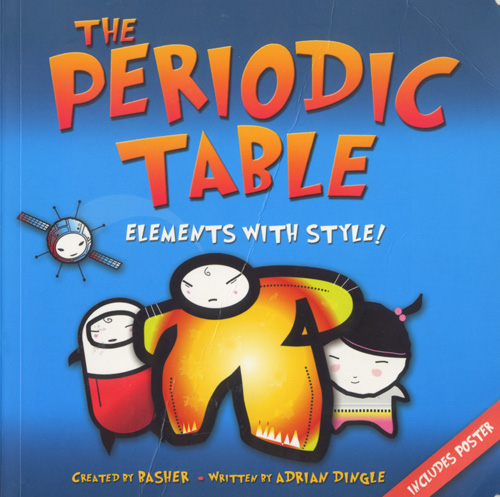The elder Free-Ride offspring is thinking about a project studying the behavior of Snowflake Free-Ride, the rabbit in residence at Casa Free-Ride. While finding interesting questions to ask about the bunny is pretty easy, working out reasonable ways to get data that might help answer those questions is somewhat harder:
Elder offspring: I want to see whether Snowflake finds food with her eyes or her nose.
Dr. Free-Ride: What are your thoughts on how to do that?
Elder offspring: Well, we need a room …
Dr. Free-Ride: … OK. Tell me more.
Elder offspring: We need a room with a fan up at the top.
Dr. Free-Ride: Why do we need a fan up at the top?
Elder offspring: To blow away the smells.
Dr. Free-Ride: Hmm. So you’re looking for some mechanism to mask smells and see if she can still find the food.
Elder offspring: Yes.
Dr. Free-Ride: I guess I’m not totally convinced a fan is the best way to mask a smell. Also, I worry that it might freak her out.
Elder offspring: Oh.
Dr. Free-Ride: Well, your hypothesis is that she’s either finding the food by smell or by sight. So how would you tell if sight is what she’s using?
Elder offspring: We start the fan and put the food there and if she can find it … We may also need to use a clothespin, like in those cartoons —
Dr. Free-Ride: We’re totally not putting a clothespin on the rabbit’s nose, smart aleck!
Elder offspring: (snickering) I know.
Dr. Free-Ride: Let’s back up a little bit. We’re talking about two possible ways you think the rabbit could locate food — one is by vision, one is by smell. Masking smell means we have to figure out a way to get the volatile stuff that the nose detects away from her. But my own hunch is that masking sight might be easier. Do you have any thoughts on how to mask —
Elder offspring: Blindfolds.
Dr. Free-Ride: Uh, no. You’ll have to be more clever, since you can’t blindfold the bunny.
Elder offspring: Put her in a dark room.
Dr. Free-Ride: I don’t know how good her night vision is. (Or how good your night vision is if you’re in the dark room trying to observe her.)
Elder offspring: If we hear munching …
Dr. Free-Ride: Isn’t she always munching on something?
Elder offspring: We’d use a food where the munching sounds like crunching.
Dr. Free-Ride: Aside from utter darkness, can you think of any other way to mask visual contact with the food?
Elder offspring: What if we surround a carrot by things that are visually distracting?
Dr. Free-Ride: Does that really test whether she’s using vision to find the carrot, or whether she can pick it out visually amongst a bunch of visually distracting things? Maybe you need to think about whether there’s some way to disguise it looking like a carrot, but it would still be there for her to smell.
Elder offspring: How about we put it behind a curtain or something?
Dr. Free-Ride: Ah, a barrier that keeps her from seeing it. Then, with the carrot out of sight but in smelling range, you’d see if she reacted like, “Where’s the carrot. GIMME THE CARROT!”
Elder offspring: Yeah.
Dr. Free-Ride: OK, that seems like a key part of your experimental design: how exactly are you going to mask the carrot’s visibility but not its smell?
Elder offspring: Invisibility cloak!
Dr. Free-Ride: You don’t get to use things that don’t exist in your science fair project. Unless you can successfully invent them, in which case — if you can successfully invent an invisibility cloak, I submit to you that that would probably be a more impressive science fair project than this information on rabbit behavior that you obtain using the invisibility cloak.
Elder offspring: Yeah, OK.
Dr. Free-Ride: Hey, is it going to be a problem that you have exactly one rabbit to study?
Elder offspring: Nah.
Dr. Free-Ride: What’s that going to do to the conclusions you can draw.
Elder offspring: I probably can’t say that all rabbits are like this based on the behavior of this one rabbit. But, she’s a pretty typical rabbit.
Dr. Free-Ride: How do you know she’s pretty typical?
Elder offspring: Because, she’s a breed [New Zealand white] that’s raised for lab use, and they want typical animals for lab use.
Dr. Free-Ride: Which means you would be surprised if she were very weird, as rabbits go?
Elder offspring: Yes.
Dr. Free-Ride: Of course, she’s been living with you for almost a year now. That might be enough to make a rabbit weird.
Elder offspring: Hey!
Dr. Free-Ride: I’m just saying. So, back to your experimental design, since Snowflake is a smart rabbit — she learns stuff — what if you make a curtain or some other barrier and she starts associating it with carrots?
Elder offspring: Maybe sometimes we could just put a rock behind it instead of a carrot.
Dr. Free-Ride: Good call — something that isn’t edible and doesn’t smell like a treat.















